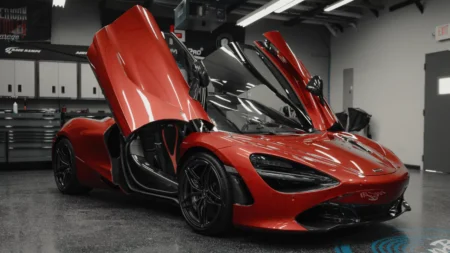If you drive a manual transmission car, you know how important the clutch is for changing gears and controlling the speed of your vehicle. But what happens if your clutch gets damaged and needs to be replaced?
Will your car insurance cover the cost of clutch replacement? The answer depends on how the clutch was damaged and what type of coverage you have.
In this article, we will explain the basics of car insurance coverage for clutch replacement and answer some common questions about this topic.
Understanding Car Insurance Coverage for Clutch Replacement
Car insurance is designed to protect you from financial losses due to accidents or other unforeseen events that damage your car or cause injuries to you or others. However, not all car insurance policies are the same, and not all types of damage are covered by car insurance. Here are some key points to understand about car insurance coverage for clutch replacement:
Standard Car Insurance Policies And Their Exclusions
The most basic type of car insurance is liability coverage, which pays for the damages and injuries you cause to others if you are at fault in an accident. Liability coverage does not cover any damage to your own car, including clutch replacement. To cover your own car, you need to have collision coverage, which pays for the repairs or replacement of your car if it is damaged in an accident, regardless of who is at fault. You may also have comprehensive coverage, which pays for the repairs or replacement of your car if it is damaged by something other than an accident, such as fire, theft, vandalism, hail, flood, or animal collision. However, both collision and comprehensive coverage have exclusions, meaning they do not cover everything that can happen to your car. One of the common exclusions is normal wear and tear or maintenance issues, which brings us to the next point.
Limited Coverage For Clutch Damage Resulting From Accidents
If your clutch is damaged as a direct result of an accident, such as a collision with another car or an object, then your collision coverage should cover the cost of clutch replacement, minus your deductible. However, if your clutch is damaged indirectly as a result of an accident, such as overheating or water getting into the clutch, then your collision coverage may not cover it. This depends on the specific terms and conditions of your policy and how the insurance company determines the cause of the damage. You may need to provide evidence that the damage was caused by the accident and not by normal wear and tear or negligence.
Exclusion Of Coverage For Normal Wear And Tear Or Maintenance Issues
The clutch is a part of your car that takes a lot of stress and friction over time. It is expected that your clutch will wear out eventually and need to be replaced as part of regular maintenance. This is considered normal wear and tear, and it is not covered by any standard car insurance policy. Similarly, if your clutch is damaged due to negligence, such as improper use, abuse, or lack of maintenance, then your car insurance will not cover it either. You are responsible for taking care of your car and following the manufacturer’s recommendations for service and maintenance.
Importance Of Reviewing Policy Terms And Conditions
As you can see, car insurance coverage for clutch replacement is not straightforward and depends on many factors. Therefore, it is important that you review your policy terms and conditions carefully and understand what is covered and what is not. You should also compare different policies from different companies and choose the one that best suits your needs and budget.
For any inquiries or uncertainties regarding your policy, reaching out to your insurance agent or company is recommended for clear explanations.
What is the difference between comprehensive and collision coverage?
Comprehensive and collision coverage are two types of optional car insurance coverage that protect your own car from damage. The main difference between them is what causes the damage:
- Collision coverage pays for the repairs or replacement of your car if it is damaged in an accident with another vehicle or object.
- Comprehensive coverage pays for the repairs or replacement of your car if it is damaged by something other than an accident, such as fire, theft, vandalism, hail, flood, or animal collision.
Both types of coverage have deductibles, which are the amounts you have to pay out of pocket before the insurance company pays for the rest. The higher your deductible, the lower your premium (the amount you pay for your policy), but also the more you have to pay in case of a claim.
What are the most common causes of clutch failure?
The clutch is a complex mechanism that consists of several parts, such as the clutch disc, the pressure plate, the flywheel, the release bearing, and the clutch cable or hydraulic system. Any of these parts can fail or wear out over time and cause problems with the clutch. Some of the most common causes of clutch failure are:
- Overheating: The clutch generates a lot of heat due to the friction between the clutch disc and the flywheel. If the clutch is not properly cooled or lubricated, it can overheat and warp, crack, or burn. This can cause the clutch to slip, shudder, or not engage or disengage properly. Overheating can be caused by driving in heavy traffic, riding the clutch, or having a faulty cooling system.
- Water contamination: Water can get into the clutch and cause corrosion, rust, or mold. This can damage the clutch disc, the pressure plate, or the release bearing and affect their performance. Water can get into the clutch due to flooding, driving through deep puddles, or having a leaky seal or gasket.
- Oil contamination: Oil can also get into the clutch and cause problems. Oil can come from the engine, the transmission, or the hydraulic system and leak onto the clutch disc or the flywheel. This can make the clutch slippery and reduce its friction and grip. Oil can also cause the clutch to overheat and burn. Oil contamination can be caused by a worn or broken seal, gasket, or hose.
- Wear and tear: The clutch is a part that wears out over time due to normal use. The clutch disc, which is made of friction material, gradually loses its thickness and effectiveness as it rubs against the flywheel. The pressure plate, which applies pressure to the clutch disc, also wears out and loses its springiness. The release bearing, which helps to release the pressure from the clutch disc, also wears out and becomes noisy or sticky. The clutch cable or hydraulic system, which connects the clutch pedal to the clutch mechanism, also wears out and becomes loose or stiff.
How much does it cost to replace a clutch?
The cost of replacing a clutch depends on several factors, such as:
- The make and model of your car
- The type and quality of the clutch parts
- The labor rate of your mechanic
- The extent of the damage
According to some estimates, the average cost of replacing a clutch ranges from $1,200 to $1,400 for most cars. However, some cars may have higher or lower costs depending on their specifications and requirements. For example, some cars may have dual-clutch systems that are more expensive to replace than single-clutch systems. Some cars may also have more complicated or difficult access to the clutch that requires more labor time and skill.
What if my clutch is damaged due to a manufacturing defect?
If your clutch is damaged due to a manufacturing defect, you may be able to get it replaced for free under your car warranty. A car warranty is a promise from the manufacturer or dealer that they will repair or replace any defective parts within a certain period of time or mileage. However, not all car warranties are the same, and not all defects are covered by car warranties. Here are some things to consider about car warranties and clutch replacement:
- Types of car warranties: There are different types of car warranties that cover different parts and services. The most common types are bumper-to-bumper warranties, powertrain warranties, corrosion warranties, and emissions warranties. A bumper-to-bumper warranty covers almost everything in your car except for normal wear and tear items such as tires, brakes, wipers, etc. A powertrain warranty covers only the engine, transmission, and drivetrain components. A corrosion warranty covers rust damage to your car’s body. An emissions warranty covers any parts that affect your car’s emissions performance.
- Duration of car warranties: Car warranties also have different durations depending on how long they last or how many miles they cover. For example, some car warranties may last for 3 years or 36,000 miles (whichever comes first), while others may last for 5 years or 60,000 miles (whichever comes first). Some car warranties may also have extensions or options that allow you to extend or enhance your coverage for an additional fee.
- Terms and conditions of car warranties: Car warranties also have different terms and conditions that specify what is covered and what is not covered by them. For example, some car warranties may require you to follow certain maintenance schedules and use certain parts or fluids for your car. Some car warranties may also have exclusions or limitations that exclude certain types of damage or defects from coverage. Some car warranties may also have deductibles that you have to pay before they pay for anything.
- Importance of reviewing warranty documents: As you can see, car warranties are not simple and straightforward documents that cover everything in your car without any questions asked. Therefore, it is important that you review your warranty documents carefully and understand what is covered and what is not. You should also keep your warranty documents in a safe place and have them handy when you need to make a claim.
If your car warranty covers clutch replacement due to a manufacturing defect, you should contact your dealer or manufacturer as soon as possible and arrange for the repair. You may need to provide proof of purchase, service records, and other documents to support your claim. You should also follow the instructions and procedures given by your warranty provider to avoid any delays or denials of your claim.
If your car warranty does not cover clutch replacement due to a manufacturing defect, you may still have some options to get it replaced for free or at a reduced cost. For example, you may be able to file a complaint with the National Highway Traffic Safety Administration (NHTSA) if you believe that the defect poses a safety risk or violates federal standards. You may also be able to join a class action lawsuit if there are other consumers who have experienced the same defect and are seeking compensation from the manufacturer. However, these options may take time and effort, and there is no guarantee that you will get a favorable outcome.




